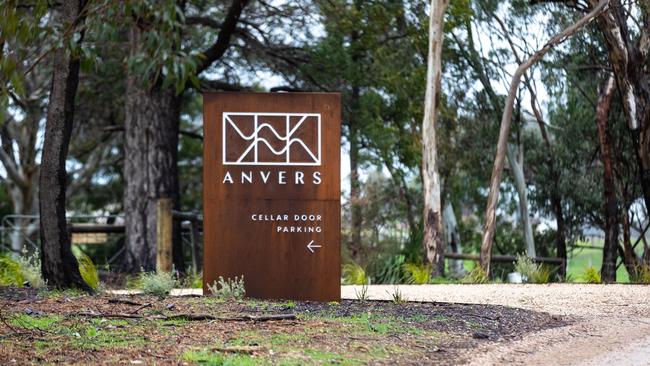Anvers | SA Weekend restaurant review
Food reviewer Simon Wilkinson heads into the bush to a winery which has undergone a magnificent conversion – but does the menu live up to the makeover?
SA Weekend
Don't miss out on the headlines from SA Weekend. Followed categories will be added to My News.
Saddle Bags and Razorback. As road names go, these sound more likely to lead to outback peril than somewhere promising for lunch.
But that’s where the blue line marking the route takes us, climbing abruptly into the hills east of Kangarilla, on a track that really isn’t designed to accommodate two vehicles heading in opposite directions.
When the road eventually widens and flattens to a ridge, with the Mt Bold reservoir below to one side and farmland to the other, the home of Anvers appears out of nowhere.
Anvers? Other than a vague recollection of seeing a bottle here and there, I didn’t know much about this winery either. It’s certainly off the beaten track of cellar doors, roughly midway between McLaren Vale and Mount Barker, in a region that, by altitude at least, should be thought of as the Adelaide Hills.
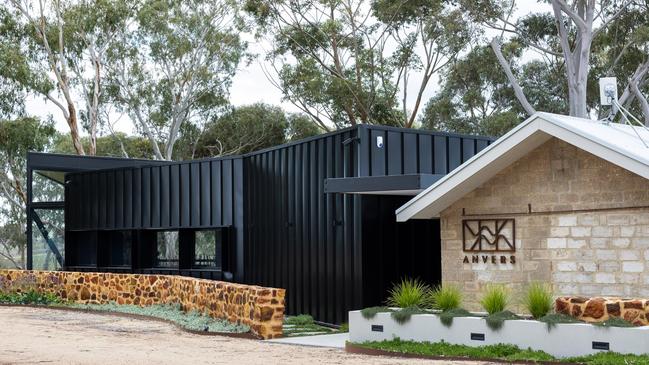
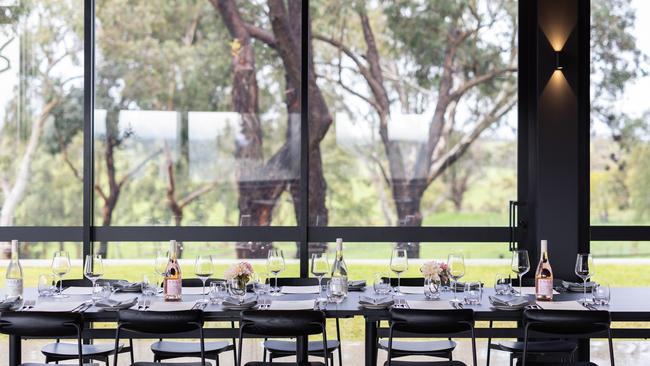
Owners Wayne and Myriam Keoghan met in the Belgian city of Antwerp, which the French call Anvers, came back to Australia and planted vines on these slopes before the turn of the century. Thirteen years ago they renovated a derelict dairy on the property, using it for private tastings and functions, then opening to the public for a short time before Covid struck. The shutdown provided the opportunity for them to embark on an ambitious expansion that dwarfs the original structure.
The design of this new restaurant/function space is breathtaking. Sitting inside, an extraordinary expanse of floor-to-ceiling glass on one side looks through a eucalypt canopy to lush paddocks and a vineyard. Turn the other way and the windows frame a scene of forest slopes plunging to the reservoir that could be in Scandinavia. From the acoustics of the ceiling, to the swivel-backed wooden seats, to the sheer scale of the footprint, it is clearly a massive investment.
For such a thrilling, contemporary space, the restaurant menu strikes me as a bit old school, with little in the way of a common narrative. The promise of “regional food provenance” and seasonality falls flat when ingredients such as asparagus and zucchini are featured in the depths of winter. Other components are repeated.
An entree of lobster mousse ravioli in a shellfish bisque (not dissimilar to the signature at another well-known cellar door restaurant) stands out among the entrees – until we’re offered a seafood special. Three tommy ruff fillets are draped over a piece of grilled ciabatta and finished with shaved fennel, rocket leaves and a smooth, well-balanced romesco sauce. This flash version of sardines on toast, as our gifted waitress describes it, would have been better if the fish had spent less time in the pan.
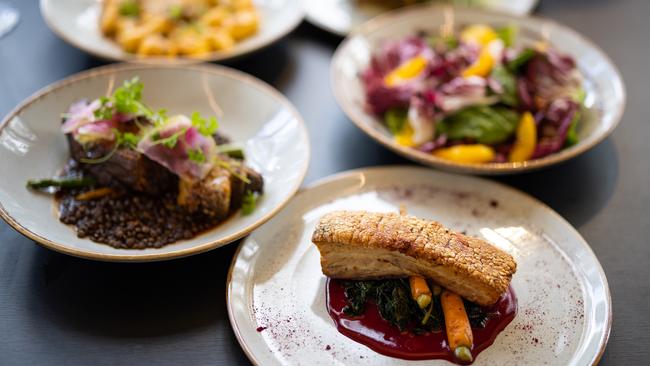
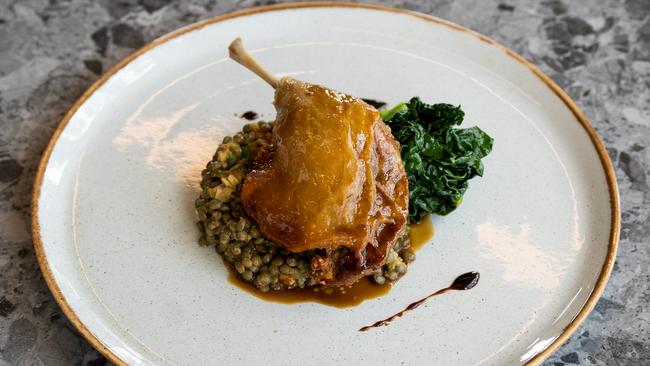
A partially deboned quail doesn’t have the smoke or singe of being cooked on a chargrill, as described, and the breast meat has gone beyond pink. The little butterflied bird is buried beneath more rocket leaves, with a scattering of grated egg yolk and morcilla (blood sausage) crumbs that don’t add much to the equation.
Another starter, the vego option of charred cabbage heart, celeriac cream, pickled apple and romesco, doubles up as the accompaniment to a piece of crisp-skinned kingfish that is, again, marginally overdone, perhaps just from the residual heat after it has finished cooking.
A bed of braised du puy lentils provides the classic bistro partnership for a confit duck leg that also comes with a sweet/sour wine sauce and wilted leaves of kale.
The warning of a 20-minute wait for the rhubarb souffle is always a good sign and this one looks promising, its cap rising from the ramekin with just a little tilt to one side like a sugar-dusted beret. An intimidating syringe is used to inject the dessert with a pink syrup that has none of rhubarb’s normal tartness and could be mistaken for liquefied strawberry jam.
The Anvers cellar door, then, is a hard one to assess. The building and its outlook are so carefully considered and flawlessly rendered, problems elsewhere are magnified, perhaps. Still, even in these early days, I wonder if the cooking is heading in the right direction.
More Coverage
